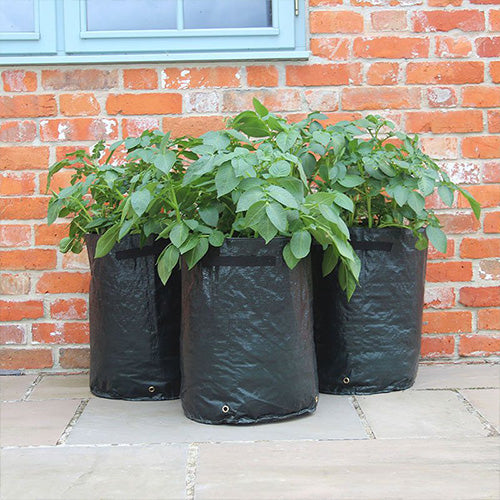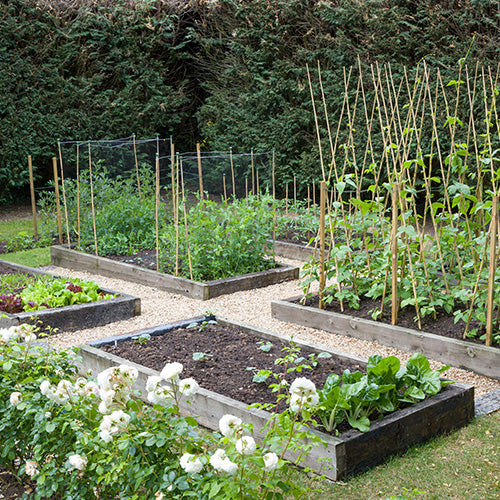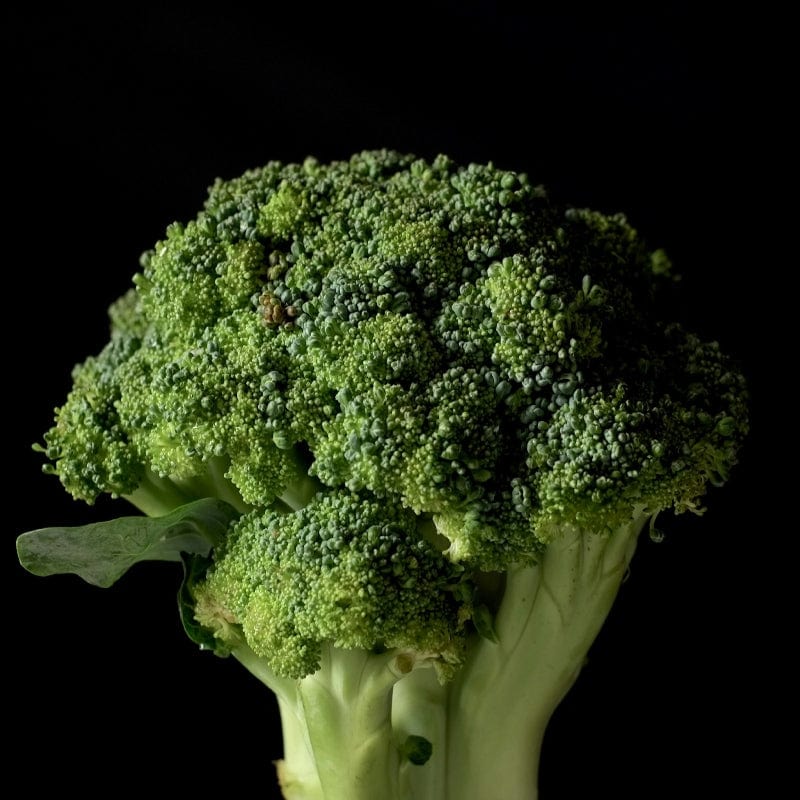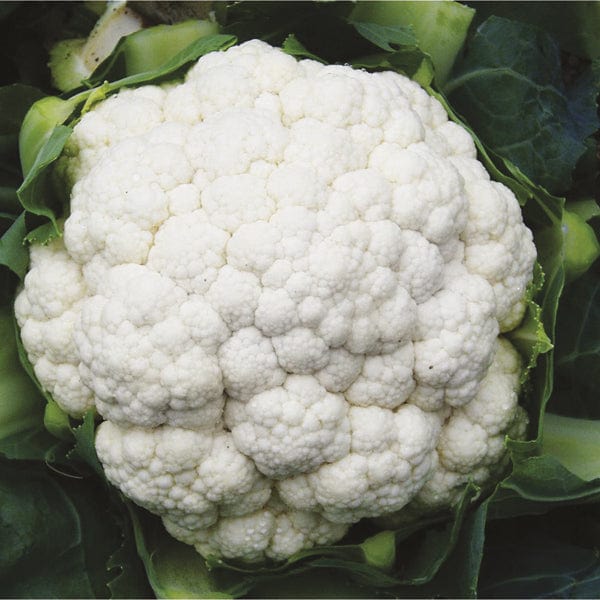While most gardeners grow seed potatoes in open ground, an alternative, especially for those with limited or no open ground, is to grow first early potatoes in a bin or similar container such as a potato grow sack. This is ideal if you are living in a space with limited growing space, poor soil quality or otherwise would benefit from more mobility and space. So, take a look below to find out all you need to know about growing potatoes in containers.
Choosing Your Container
First, early seed potatoes can be planted in dustbins from late March (in the south of the UK) but they will need protection from hard frosts. Planting early should enable the crop to be harvested, and a second crop planted in mid-summer should provide some more new potatoes in the autumn.
Specialised potato growing containers, such as barrels and potato grow sacks are ideal options. The barrels have access holes in the sides, near the base, which can be opened to extract the potatoes when the crop is ready, while the grow sacks have drainage holes and carrying handles. Alternatively, any sort of bin, barrel or plastic grow pot can be used for growing potatoes in containers. However, you should make sure that you know what was originally stored in the barrel and avoid bins or barrels that have contained chemicals or other harmful substances (unless you are very certain that any residue will be harmless). Ideally, the bin or barrel should be about 1.2m (4ft) high. Smaller containers (such as plastic dustbins) will suffice, but the yield will be limited.
Cleaning the Container
Make sure that the barrel is clean and free of contamination, this is especially important the first time the barrel is used - make sure that all residues of any previous contents are removed. Make sure that the barrel is free draining, adding some holes in the bottom if necessary.
Planting Your Potatoes
Once you have the barrel, decide how many medium-sized first early seed potatoes you are going to be able to fit in it. This will depend upon the size of the barrel - a 15cm (6in) space needs to be left between each seed potato and the sides of the barrel. Sometimes placing one seed potato in the centre and spacing others between it and the sides of the barrel will maximise the number you can fit.
Once you know how many seed potatoes you need for growing potatoes in containers, select them and chit them (see the general notes for chitting seed potatoes). If you plan to plant a second crop for harvest in the autumn, select additional seed potatoes and store them in a dark, cool place.
When your seed potatoes are ready for planting (probably 4 to 6 weeks), turn your attention to preparing the barrel. Remember that the barrel will become heavier as the potatoes grow and you add garden compost, so try to choose an initial position that is most convenient for you.
With the barrel in place, cover the bottom of the barrel with about 5 to 7.5cm (2 to 3in) depth of stones and material to aid drainage. Cover the stones with about 12.5cm (5in) of well-rotted compost mixed with a good general fertiliser. Then add a layer of general-purpose compost to a depth of about 15cm (6 inches).
Plant the seed potatoes, with the main shoots uppermost, into the top of the compost - remember to leave a 15cm (6in) space between each seed potato. Cover the seed potatoes with a further 7.5cm (3in) layer of compost.
Composting
The compost will have been exhausted by the growing potatoes, so don't reuse it, but add it to the compost heap or dig it in as a soil conditioner where it can be left until the crop is finished. Ideally, choose a sunny but sheltered position.
When to Stop Watering Potatoes in Containersh
Keep the barrel well-watered (but not waterlogged), especially in sunny weather. Include in each watering some proprietary tomato feed or something similar. You should keep watering your potato plants up until the point where they start to flower.
Adding Compost
As the potatoes grow within the barrel, add further 7.5cm (3in) layers of compost each time the stems are about 15cm (6in) above the top of the compost.
Continue to add compost as necessary until the compost reaches about 5cm (2in) from the top of the barrel. Add some stakes into the top of the compost to keep the plants from drooping over the side.
Harvesting Your Potatoes
When to harvest your potatoes
The potatoes will be ready to harvest when the potato plants have flowered - typically in late June or early July.
Your potatoes will be ready for harvesting at the end of the growing season. You will be able to see they are ready when the flowers begin to fade, the foliage turns yellowish-brown and then starts to dry. If the plants have visibility withered and died, it is definitely time to harvest them.
When the best time frame is for harvesting your potatoes will depend on various aspects, including the type of potatoes you’ve planted, when you planted them and the weather conditions at the time.
The following are some rough estimations as to when your potatoes will be ready for harvesting:
- Early-season potatoes: These potatoes mature in around 60 to 80 days. Though, it is important to note that they can only be stored for about three weeks.
- Mid-season potatoes: Also known as second earlies, these potatoes are ready to be picked usually around the 80 to 100-day mark after being planted. You can store them for up to a month.
- Later season potatoes: These can be harvested after about 100-130 days.
How to harvest your potatoes
If a special 'potato barrel' has been used, access to the potatoes at the base should be fairly easy, just open up an access hole and collect the potatoes you need. Otherwise, if space allows, tipping the barrel onto its side should make the harvest easy, but care must be taken as the full barrel will be rather heavy. From there, you can reap the benefits of growing your potatoes in a container and taste the difference that fresh, homegrown potatoes offer! If you’re looking for a great way to effectively store your potatoes, potato sacks can keep your potato harvest in one convenient place after you’ve completed your harvest.
Contact Us
We hope our guide has taught you everything you need to know about growing potatoes in containers. If you’re after more expert tips on growing your own potatoes, you can find all our best advice in our gardening blog.
If you’d like to ask us about our range of gardening supplies, such as our vegetable garden seeds and plants, feel free to get in touch with any questions. A member of our team will be more than happy to help.











